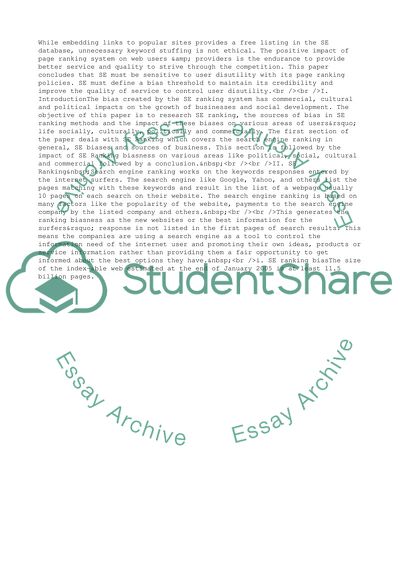Cite this document
(Impact of Search Engines on Page Popularity Case Study, n.d.)
Impact of Search Engines on Page Popularity Case Study. Retrieved from https://studentshare.org/management/1705025-describe-the-sources-of-bias-that-are-found-in-search-engine-rankings-and-discuss-the-extent-to-which-these-may-be-commercially-politically-or-culturally-impor
Impact of Search Engines on Page Popularity Case Study. Retrieved from https://studentshare.org/management/1705025-describe-the-sources-of-bias-that-are-found-in-search-engine-rankings-and-discuss-the-extent-to-which-these-may-be-commercially-politically-or-culturally-impor
(Impact of Search Engines on Page Popularity Case Study)
Impact of Search Engines on Page Popularity Case Study. https://studentshare.org/management/1705025-describe-the-sources-of-bias-that-are-found-in-search-engine-rankings-and-discuss-the-extent-to-which-these-may-be-commercially-politically-or-culturally-impor.
Impact of Search Engines on Page Popularity Case Study. https://studentshare.org/management/1705025-describe-the-sources-of-bias-that-are-found-in-search-engine-rankings-and-discuss-the-extent-to-which-these-may-be-commercially-politically-or-culturally-impor.
“Impact of Search Engines on Page Popularity Case Study”. https://studentshare.org/management/1705025-describe-the-sources-of-bias-that-are-found-in-search-engine-rankings-and-discuss-the-extent-to-which-these-may-be-commercially-politically-or-culturally-impor.


